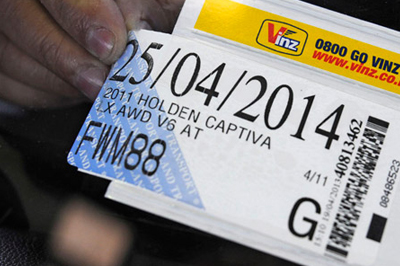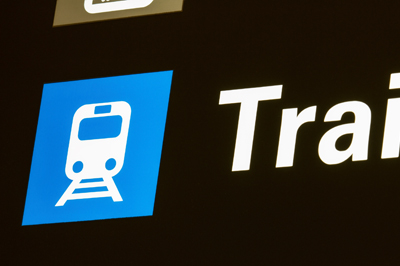|
|
|
|
|
|
|
|
 |
 |
 |
 |
 |
 |
 |
 |
Feeling the road rage?

Feeling angry while sitting in the traffic? Annoyed that someone has just cut you off? Hopping mad about that guy not letting you in? You’re not alone. A new survey from consumer satisfaction company Canstar Blue shows around a quarter of Aucklanders have experienced road rage, where either they or someone they have encountered have expressed their anger over a driving incident.
If you live in Otago, you’re doing better — just 10 per cent of drivers in the southern city report such incidents. Wellington and Canterbury had similar levels of road rage, at 21 per cent.
And the stereotype of grumpy old people on the roads has also been shown to be untrue: younger drivers experience higher rates of road rage. Twenty-four per cent of Generation Ys and 26 per cent of Gen Xers claim to have been in an incident, says Canstar New Zealand General Manager Jose George. The least likely to experience anger on the road are Baby Boomers, at 15 per cent.
Men (23 per cent) are slightly more likely than women (21 per cent) to be involved in an expression of road rage. Canstar has also released the results of its vehicle customer satisfaction ratings for 2016, with Hyundai taking out this year’s survey, receiving five-star ratings across every category. It was the only car brand to get full marks for reliability and driving experience.
George says consumers rated reliability (35 per cent) and driving experience (34 per cent) as their key drivers of satisfaction, with value for money coming in a distant third at (19 per cent). ‘Hyundai is known for having a model to suit every lifestyle. They work to drive competition in the marketplace through innovation, and place a lot of emphasis on consumer service, and before- and after-sale efforts which are appreciated by their customers.’
|
 |
 |
 |
 |
 |
 |
 |
 |
|
|
|
|
|
|
|
|
|
|
|
 |
 |
 |
 |
 |
 |
 |
 |
BMW introduces plug-in hybrid models

BMW has taken a further step into the environmentally friendly vehicle market with the release of four new plug-in hybrid models in New Zealand. The new sustainability-focused vehicles will be marketed under the BMW iPerformance banner, and will be known as the 225xe Active Tourer, the 330e Sedan, the X5 xDrive40e Sports Activity Vehicle, and the 740e Luxury Sedan.
BMW Group New Zealand managing director Florian Renndorfer says the new BMW iPerformance vehicles ‘combine our most popular body styles with the latest innovations in sustainable personal transport.’
‘The 225xe which adds an electric power-train to the already versatile Active Tourer; the iconic 3 Series is now available as the 330e; the legendary X5 with eDrive and xDrive technology; and our luxurious flagship 7 Series is now available with the latest in BMW powertrain technology.’
At the top end of the market, the 740e will retail for just under $200,000. It can be charged at home in about four hours, and at a public fast-charging station is under three hours.
The BMW i3 — the group’s first pure-electric vehicle — is also to be updated, boasting improved battery technology for an increased range of up to 300 km and withthe inclusion of DC rapid charging as standard. Also, for the first time in New Zealand the i3 will soon be available in both battery-electric and range-extender model variants.
With the new hybrids and the full-electric i3 and i8, BMW Group says it now offers the most comprehensive range of plug-in hybrids and EVs in the New Zealand market.
|
 |
 |
 |
 |
 |
 |
 |
 |
|
|
|
 |
 |
 |
 |
 |
 |
 |
 |
Regos drop, but no refunds

There will be no refunds for car owners who paid over the odds for the ACC component of their annual licence (‘rego’), while tweaks were being made to the system. However, all car owners and fleet managers will be better off from July 1, with the introduction of new ACC motor vehicle levies, which came into effect on July 1. The reduction in ACC licence and petrol levies could save the average light vehicle owner around $65 per year.
On the 1st of July, the average motor vehicle levy — which includes the annual licence levy and petrol levy — reduced from around $195 to around $130 per vehicle, a drop of around 33 per cent. This will save New Zealanders $218 million, and follows $438 million of cuts to motor vehicle levies last year. In total, the average motor vehicle levy has fallen from $330 to $130 since 2014.
The vehicle risk-rating system used to calculate these levies has been refined, after initially facing some criticism. The ratings — and therefore the levy paid by owners — reflects how well their vehicle protects occupants and other road users in a crash.
‘It was clear the new approach needed improved data for some cars and refinements to policy to ensure greater integrity of the system for some models,’ said Kaye. ‘As a result, various changes have been made to the way vehicles will be risk rated from the 1st of July 2016. For example, the system now better identifies when improvements have been made to particular models of car, and it better recognises cars that have different names but which are essentially identical vehicles.’
More than 25 per cent of all vehicles on the road — three quarters of a million of them — will change rating bands from July 1, and around 36,000 vehicles will jump from being the riskiest to the safest in a crash under ACC's risk-rating system. However, the government will not refund even those most greatly affected ‘because the changes are due to improvements to the system, not wrong information’, reported the New Zealand Herald.
You can find out how much your car’s new rego will be at: https://comms.leaseplan.co.nz/mail/link/rqPQLuu7vQFGnm54_shTBQ
|
 |
 |
 |
 |
 |
 |
 |
 |
|
|
|
 |
 |
 |
 |
 |
 |
 |
 |
Still driving to the airport…

Traditional trains are out, but light rail — like modern trams — could be in on the route from Auckland Airport to the CBD.
In late June, the board of Auckland Transport decided to scrap heavy rail as an option, due to its poor value for money. Instead, the board instructed Auckland Transport management to investigate a bus-based high-capacity service to the airport to the level it has done with light rail, ‘so a value-for-money comparison can be made between the two’. It also instructed Auckland Transport to move ahead with route protection for bus/light rail.
As part of the process, Auckland Transport is also looking at a light-rail network from the airport to Botany, through Manukau and East Tamaki. The total net cost of the light rail option was estimated at $718 million, compared to $1657 million for heavy rail.
Heavy rail capacity has been calculated based on three-car Electric Motor Units (EMUs) running on the Auckland heavy rail network, and light rail capacity on the design vehicles for the Auckland Light Rail Transit (ALRT) project currently under investigation. These are estimated to be 33 m long in 2026, and would be coupled to form two-car 66 m train sets by 2046.
Another option being looked at are ‘autonomous’ or driverless buses. However, any changes are many years away, so for now it’s staying stuck in traffic.
|
 |
 |
 |
 |
 |
 |
 |
 |
|
|
|
|
|
|
|
|
|
|
|